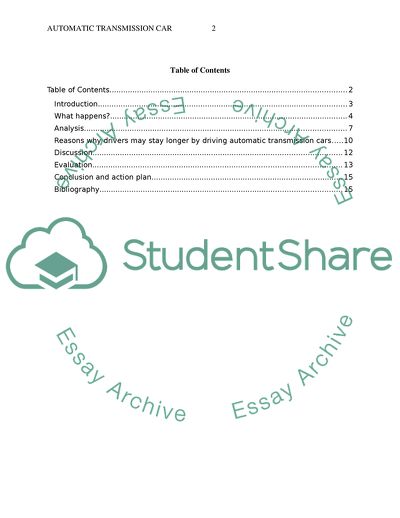Cite this document
(Reasons Why Drivers May Stay Longer by Driving Automatic Transmission Coursework Example | Topics and Well Written Essays - 3750 words, n.d.)
Reasons Why Drivers May Stay Longer by Driving Automatic Transmission Coursework Example | Topics and Well Written Essays - 3750 words. https://studentshare.org/design-technology/1854339-would-changing-to-an-automatic-transmission-car-allow-older-drivers-to-continue-to-drive-for-longer
Reasons Why Drivers May Stay Longer by Driving Automatic Transmission Coursework Example | Topics and Well Written Essays - 3750 words. https://studentshare.org/design-technology/1854339-would-changing-to-an-automatic-transmission-car-allow-older-drivers-to-continue-to-drive-for-longer
(Reasons Why Drivers May Stay Longer by Driving Automatic Transmission Coursework Example | Topics and Well Written Essays - 3750 Words)
Reasons Why Drivers May Stay Longer by Driving Automatic Transmission Coursework Example | Topics and Well Written Essays - 3750 Words. https://studentshare.org/design-technology/1854339-would-changing-to-an-automatic-transmission-car-allow-older-drivers-to-continue-to-drive-for-longer.
Reasons Why Drivers May Stay Longer by Driving Automatic Transmission Coursework Example | Topics and Well Written Essays - 3750 Words. https://studentshare.org/design-technology/1854339-would-changing-to-an-automatic-transmission-car-allow-older-drivers-to-continue-to-drive-for-longer.
“Reasons Why Drivers May Stay Longer by Driving Automatic Transmission Coursework Example | Topics and Well Written Essays - 3750 Words”. https://studentshare.org/design-technology/1854339-would-changing-to-an-automatic-transmission-car-allow-older-drivers-to-continue-to-drive-for-longer.


